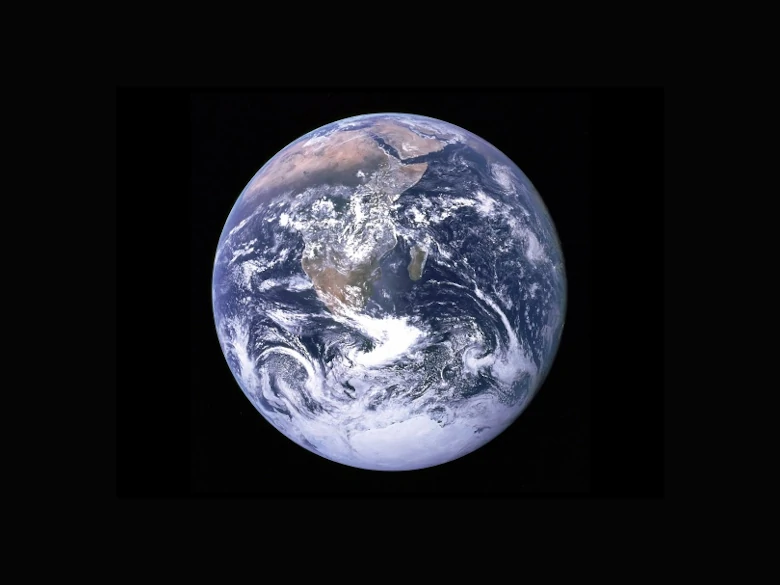Can you really watch the Earth spin? Exploring the fascinating science of our planet's rotation

Have you ever wondered what it would be like to watch the Earth spin? While we cannot observe our planet spinning on its axis in real time, there are ways to observe our planet's rotation.
In this blog post, we will delve into the science behind the rotation of our planet and uncover some of the mysteries that surround it. Join us as we explore why days are shorter at one end of the year than another, how movements in space affect our day-to-day lives and more!
Get ready for a journey around the world from your own home – let’s get started!
Science Of Earth's Rotation
To understand how we can watch the Earth spin, it's important to first understand the science behind it. The Earth rotates on its axis, which is an imaginary line that runs through its centre from the North Pole to the South Pole. It takes the Earth 24 hours to complete one full rotation on its axis, which is what causes day and night. The rotation also causes the Coriolis effect, which causes moving objects to appear to curve, and the trade winds and ocean currents to follow a circular pattern.
How fast does the earth rotate?
The speed of the Earth's rotation varies depending on where you are on the planet. At the equator, the Earth rotates at a speed of about 1,000 miles per hour, while at the poles, it rotates at a much slower speed of about 0 miles per hour. This is due to the fact that the Earth is not a perfect sphere, but rather bulges at the equator and flattens at the poles.
Observing Earth's Rotation
So, how can we observe the Earth's rotation?
One way is to look to the stars. You need to find a clear and dark sky away from light pollution. Look for Polaris, which is the brightest star in the Little Dipper constellation. The other stars will appear to rotate around it in a circular pattern, completing a full rotation every 24 hours. This is called the 'circumpolar motion' of the stars.
Another way to observe the Earth's rotation is through a Foucault pendulum. This device consists of a heavy weight suspended from a long wire that swings back and forth. As the Earth rotates, the plane of the pendulum's swing appears to rotate clockwise or counterclockwise, depending on your location.
Finally, you can also observe the Earth's rotation through time-lapse photography. By taking photos of the sky over an extended period of time, you can capture the movement of the stars and the Earth's rotation. Aryeh Nirenberg, a photographer, used an equatorial tracking mount to take a timelapse video of the Earth's rotation. Aryeh spent three hours filming the video below.
How does the earth’s rotation affect our lives?
The movements of celestial bodies in space have a profound effect on our day-to-day lives. For example, the rotation of Earth and its tilt towards or away from the Sun are key factors in why days get shorter or longer at different times of the year. The Coriolis Effect is also an important force that influences Earth’s rotation and has a greater influence on weather patterns near the equator. Additionally, ocean currents are affected by the Coriolis Force, causing them to turn clockwise in the Northern Hemisphere and counterclockwise in the Southern Hemisphere.
Also, since time is based off of Earth’s rotation, as it spins each day gives us night and day. This also means we have 12 hours of daylight every day no matter where we live on Earth; however, this can be affected by things like axial tilt or seasonal variations. Additionally, because of how much sunlight we receive throughout the day can vary from season to season depending on how close we are to the equator or pole. This affects things like what crops farmers grow during certain times of the year, when businesses open their doors to customers, etc.
In conclusion, understanding how movements in space affect our day-to-day lives is crucial and while it may not be possible to directly watch the Earth spin, there are ways to observe the effects of its rotation. From the movement of the stars to time-lapse photography and the use of a Foucault pendulum, these methods allow us to witness the incredible science behind our planet's rotation. So next time you look up at the stars, remember that you're also observing the Earth's constant motion.
If you liked reading this article, you may enjoy How High Can You Jump on Different Planets? A Guide to Jumping Across the Solar System, where we explore how the gravities of different planets affect how high you can jump.
Not a Geniebook subscriber yet? Learn more about our three core products - GenieSmart, GenieClass and GenieAsk, and click the banner below to register for a complimentary Strengths Analysis to accelerate your child’s academic journey. All the best for the year ahead!


 SG
SG  VN
VN 
















